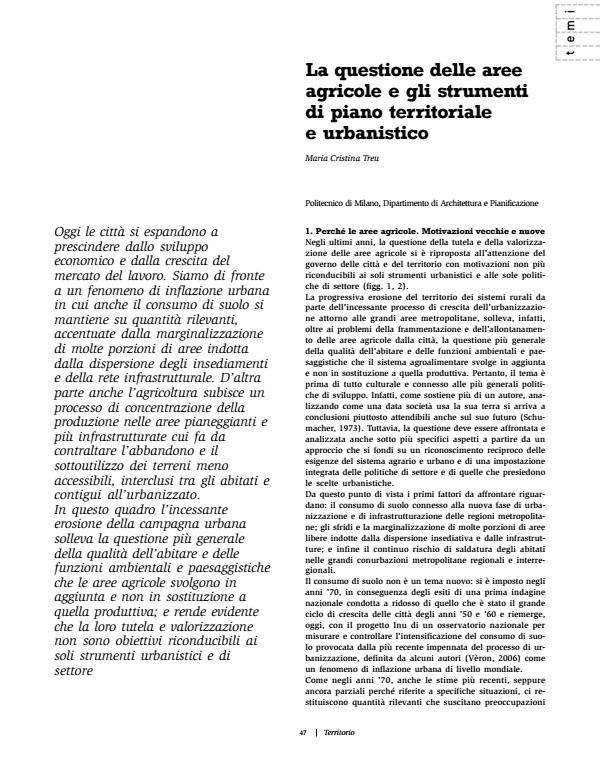La questione delle aree agricole e gli strumenti di piano territoriale e urbanistico
Journal title TERRITORIO
Author/s Maria Cristina Treu
Publishing Year 2009 Issue 2009/49
Language Italian Pages 10 P. 47-10 File size 857 KB
DOI 10.3280/TR2009-049007
DOI is like a bar code for intellectual property: to have more infomation
click here
Below, you can see the article first page
If you want to buy this article in PDF format, you can do it, following the instructions to buy download credits

FrancoAngeli is member of Publishers International Linking Association, Inc (PILA), a not-for-profit association which run the CrossRef service enabling links to and from online scholarly content.
The question of the agricultural areas and urban and regional plans - Cities today expand regardless of economic development and growth in the labour market. We are in the presence of a phenomenon of urban inflation in which even the consumption of land remains at high quantitative levels, accentuated by the marginalisation of many portions of areas induced by the dispersion of settlements and infrastructure networks. On the other hand agriculture is also undergoing a process of the concentration of production on flat areas of land with more infrastructures, while in contrast to this, less accessible tracts of land enclosed between dwellings and adjacent to urbanised areas are abandoned and underused. In this context the incessant erosion of urban countryside raises the more general question of the quality of living and of the environmental and landscape functions which agricultural areas perform in addition to and not as a substitute for their production functions. And this makes it clear that to protect and improve them are not objectives attributable to urban planning and sector instruments alone.
- Landscape Lab Fabio Bianconi, Marco Filippucci, pp.219 (ISBN:978-3-319-94149-3)
- The Valuation of Idle Real Estate in Rural Areas: Analysis and Territorial Strategies Anna Richiedei, in Sustainability /2020 pp.8240
DOI: 10.3390/su12198240
Maria Cristina Treu, La questione delle aree agricole e gli strumenti di piano territoriale e urbanistico in "TERRITORIO" 49/2009, pp 47-10, DOI: 10.3280/TR2009-049007